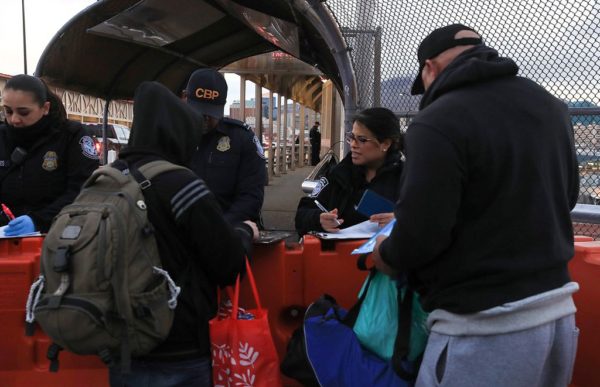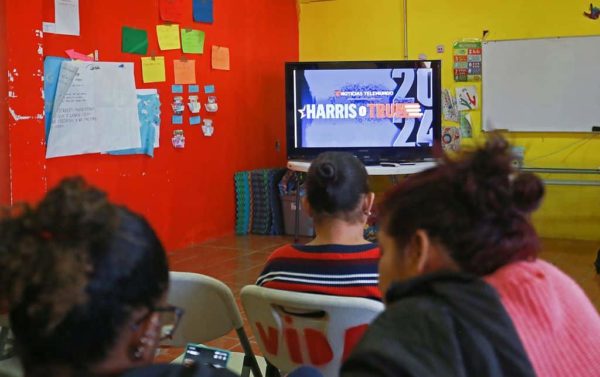Trump Plans to “Close” the Border with Mexico on Day One

The strict immigration policy will increase the flow of migrants at Mexico’s northern border, warn activists and migrants.
HAVANA TIMES – President-elect Donald Trump, has started shaping the decrees he will sign on his first day in office, including one on immigration at the border with Mexico, and assembling his advisory team for the White House and his cabinet.
According to reports on Thursday, November 7, 2024, in The Washington Post and Politico, Trump’s campaign is already in transition mode following Tuesday’s US elections, in which he won a second term beginning January 20, 2025.
Trump plans to issue on his “first day” decrees to “close” the border with Mexico and boost oil drilling to lower prices, said Jason Miller, advisor to the President-elect, in an interview with Politico.
The advisor provided no details on what this supposed “border closure” would entail, whether it would mean shutting down legal entry points or increasing security along the porous border, which spans more than 3,000 kilometers.
The former president’s plan, who served from 2017 to 2021, has raised concerns in the administration of current President Joe Biden that there could be a surge of migrants attempting to enter the country via the southern border before the transition, reported NBC News on Thursday.
Trump already indicated this week that on “the first day” of his term, he would threaten Mexico with 25% tariffs on all its imports if it does not stop the “arrival of criminals and drugs into the country,” a move that could violate the trilateral trade agreement between Canada, Mexico and the US:.
Increased Migrant Flow
Donald Trump has stigmatized migrants and his strict immigration policy will lead to an increased flow of migrants at Mexico’s northern border, according to activists and migrants.
“There could be a backlog of migrants in Ciudad Juárez, as has happened on previous occasions,” said Francisco Segovia, director of the Frontera de Gracia shelter.
He recalled that “it takes a long time for the US government to authorize the passage of a migrant, and that is our main concern: that the migrant wave grows, and the flow of migrants reaching the border increases,” he pointed out.
Segovia noted that Trump’s rhetoric has been openly anti-immigrant since his previous term (2017-2021), and now it may be even tougher.
“Now that Trump is the chosen one, we’ll have to wait and see how the situation among migrants at the border develops,” Segovia stated.

Among the migrants, Trump is seen as a figure representing strict immigration policies and an uncertain future for those seeking to cross the border.
Although the US Department of Homeland Security has stated that the country’s immigration laws remain strict and that there will be no immediate changes in immigration laws following the US elections, migrants were seen crossing the international bridges with fear that Trump’s return could lead to their expulsion, even if they had their CPB ONE appointment.
“We had hoped that the other person (Kamala Harris) who was running against Trump for the US Presidency would win, and now we’re afraid; we know that if there are opportunities to enter, then it’s better to do things right and wait for what he says,” said Jose Eduardo Castañeda Méndez, a Salvadoran national.
Trump’s return to the presidency represents a renewed prospect of obstacles and separations for migrants at Mexico’s northern border. Amid an uncertain future, many find strength in the community and local organizations, determined to wait until the last moment to see what their fate will be.
Trump Assembles His Team
Meanwhile, the President-elect’s campaign began on Wednesday to seriously discuss possible candidates for his government team, with Republican Senator Marco Rubio among the favorites to become Secretary of State, according to The Washington Post.
The Hispanic legislator from Florida, of Cuban origin, had significant influence on Latin American policy during Trump’s first term, given his power in the Senate Foreign Relations Committee, and this year he was among the vice-presidential hopefuls in the Republican campaign.
Other potential candidates for the US diplomatic leadership include former Director of National Intelligence Rick Grenell, who was close to Trump and served as ambassador to Germany from 2018 to 2020, and Senator Bill Hagerty, who was ambassador to Japan, according to Politico.
For the position of Treasury Secretary, the names being considered include billionaire investor John Paulson, known for amassing a huge fortune by predicting the 2008 financial crisis, and the President-elect’s current economic advisor, investor Scott Bessent, as reported by The Washington Post.
Republican Senator Tom Cotton could become Secretary of Defense, while independent candidate Robert Kennedy Jr., known for his anti-vaccine stance, is expected to have a role related to health or the regulation of drugs and food in the country.
Billionaire Elon Musk and television host Tucker Carlson spent Wednesday with Trump at Mar-a-Lago (Florida), and they could influence these initial measures and cabinet selections, for which no obstacles are expected thanks to the Republican majority in the Senate.





